  Rectangular Port Vacuum Valves Rectangular Port Vacuum Valves
Ports to 200 X 1400 mm; 8 X 55 inch.
Aluminum, Steel or Stainless Steel.
(RoHS) 2002/95/EC Compliant.
Auto Close or Open on Power Fail.
NW and ISO Gauge & Roughing Ports.
Vacuum Research Corporation Phone: 800/426-9340
Web: www.vacuumresearch.com
E-Mail: vrc@vacuumresearch.com
|

 Speed pump-down and vacuum performance with RediVac™ Fasteners and Seals from UC Components Inc. Speed pump-down and vacuum performance with RediVac™ Fasteners and Seals from UC Components Inc. |
 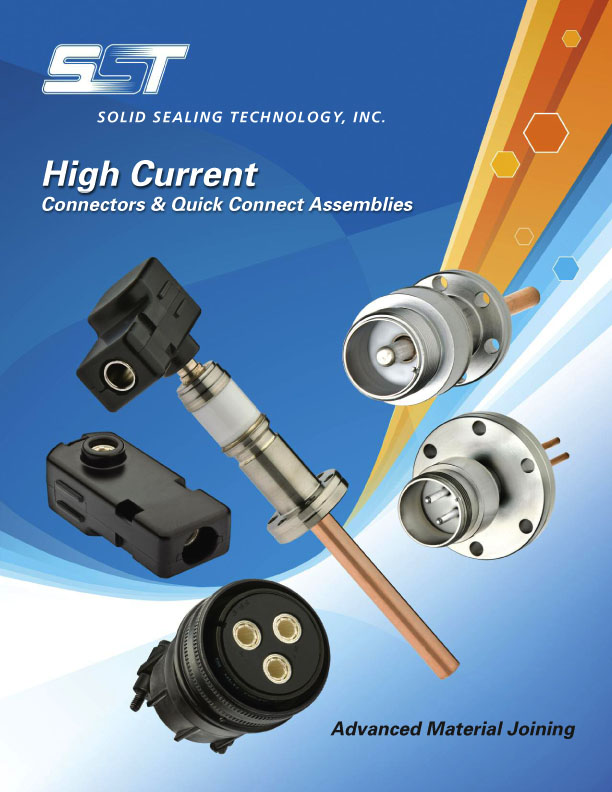
Solid Sealing Technology designs and manufactures hermetic assemblies using metalizing, brazing and glass-ceramic sealing including standard and custom Feedthroughs/Connectors for extreme environments and UHV.
Contact:
Ph: 518-874-3600
Fax: 518-874-3610
info@solidsealing.com
|
 
Thin-Films Research is prepared to meet your custom thin-film coating requirements. Using state-of-the-art equipment and over 40 years of experience, Thin-Films Research offers technology for the electro-optics, semiconductors, sensors & medical electronic industries. Learn More
Thin-Films Research, Inc.
270 Littleton Road
Westford, MA 01886
Phone: 978-692-9530
Fax: 978-692-9531
E-Mail: sales@thinfilmsresearch.com |
 
Turbopumps for High Performance and Reliability
HiPaceTM turbopumps, available in pumping speeds from 10 to 3000 l/s, provide high gas throughput, exceptional compression for light gases and reliable operation, even in the harshest coating applications.
Learn More.
Pfeiffer Vacuum, Inc.
24 Trafalgar Square
Nashua, NH 03063-1988
Phone: 603-578-6500
Web site: www.pfeiffer-vacuum.com
hipace@pfeiffer-vacuum.com
|

The Hiden HPR-30 is a residual gas analyser configured for analysis of gases and vapours in vacuum processes and for vacuum diagnostics.
Learn more.
E-mail address: info@hiden.co.uk
Phone: +44 [0] 1925 445225 (UK)
or [1] 734 542 6666 (USA)
Website: www.HidenAnalytical.com
|
 
VAT's REAL L-MOTION VALVE
For SEMI and LED
VAT invites you to join us at Semicon - Booth #919. See VAT's latest valve 450mm technology transfer valve and other valves for semi applications.
Contact Us:
Phone: 781-935-1446
or 800-935-1446
|
 
Capacitance Manometers that Last
...Up to 3x Longer
The rugged design of the Brooks XacTorr handles byproduct build-up, lasting up to three times longer even in aggressive processes. Learn more.
Brooks Instrument
Phone: 215.362.3700
Email:
BrooksAM@BrooksInstrument.com
|
 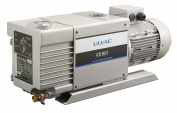
Dual Stage Rotary Vane Pumps
The VD Series dual stage, oil rotary vacuum pumps are available in pumping speeds from 600 - 800 l/min. They're lightweight and feature low noise with minimal vibration levels.
Learn More.
|
 
Automatic Valve Controller The INTELLITROL series of automatic valve controllers provide total control of vacuum operations. It offers fully automatic, protected manual mode and service mode for complete manual operation. Learn More.
YTI Thin Film Products and Services
Phone: 860.429.1908
Intellitrol@ytionline.com
www.ytionline.com
|
 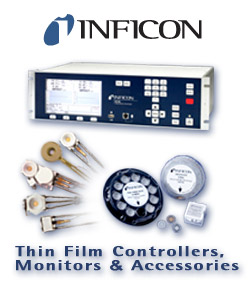
INFICON thin film deposition controllers, monitors and accessories, including customizable sensors and feedthroughs, offer features, function and value targeted to your application. View our catalog and contact us today! |
 
Rebuilt Feedthroughs
Rigaku rebuilds ferrofluid feedthroughs for all leading manufacturers and offers a warranty on rebuilt units. Most parts are stocked in inventory for fast turnaround. Learn More.
Rigaku Vacuum Products
E-mail: vacuum-info@rigaku.com
Phone: 603-890-6001
|

Comdel's CV Series Delivers Stable Power for VHF Applications
Comdel's CV series offers stable power at frequencies from 30 to 80 MHz. Ideal for use in VHF plasma systems, solar/photovoltaics, CW and pulsed laser systems. Learn more.
Comdel
11 Kondelin Road
Gloucester, MA 01930
Tel: 978-282-0620 or 800-468-3144
Fax: 978-282-4980
www.comdel.com
info@comdel.com
|

From AR Coatings to Notch Filters, and from TCOs to DBRs, Evatec offers customized coating platforms and complete process solutions based on enhanced evaporation and sputter.
Phone: (603) 669-9656
www.evatecnet.com
E-Mail:infoNA@evatecnet.com
|
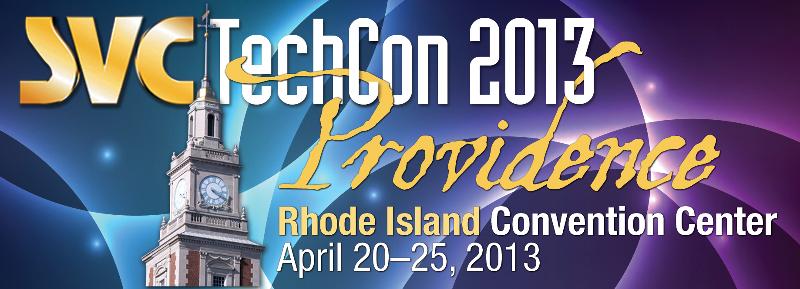
SAVE THE DATE!
SVC 2013 TechCon
Providence, Rhode Island
April 20-25, 2013
Technical Program - April 22-25
Exhibit - April 23-24
Education Program - April 20-25
Featuring Two Symposia Topics:
Coatings and Surface Treatments for Medical Applications
-and-
Thin Films for Photovoltaics and Batteries
|
|
|

|
|
High Brightness-LED Makers Drive Economic Improvement with Alternative Substrates, Automation, and Yield
|
From Solid State Technology, May 8, 2012, by Paula Doe: "Light-emitting diode (LED) manufacturing utilization rates are picking up again, with utilization in Taiwan now back up to 70 to 90% of capacity. Companies expect to close in on 100% in a month or two, driven by TV backlight demand, reports Yole Développement senior analyst Eric Virey. Asian producers see demand for general lighting starting to pick up as well, expecting general lighting -- mostly replacement bulbs -- to account  for 10 to 30% of company revenues by the end of the year. "It's already becoming a commodity product -- even before being popular," says Virey. "It's now so competitive with so many lightbulb suppliers, though only a few are of good quality, that it's pushing prices down quickly, so margins are shrinking fast." for 10 to 30% of company revenues by the end of the year. "It's already becoming a commodity product -- even before being popular," says Virey. "It's now so competitive with so many lightbulb suppliers, though only a few are of good quality, that it's pushing prices down quickly, so margins are shrinking fast."
Source: Read the full article...
Solid State Technology: http://www.electroiq.com/articles/sst/2012/05/hb-led-makers-drive-economic-improvement.html
Image: Wikipedia
|
|
UWM Discovery Advances Graphene-Based Electronics
|
From University of Wisconsin-Milwaukee News, April 13, 2012,
by Laura L. Hunt: "Scientists and engineers at the University of Wisconsin-Milwaukee (UWM) have discovered an entirely new carbon-based material that is synthesized from the 'wonder kid' of the carbon family, graphene. The discovery, which the researchers are calling 'graphene monoxide (GMO),' pushes carbon materials closer to ushering in next-generation electronics."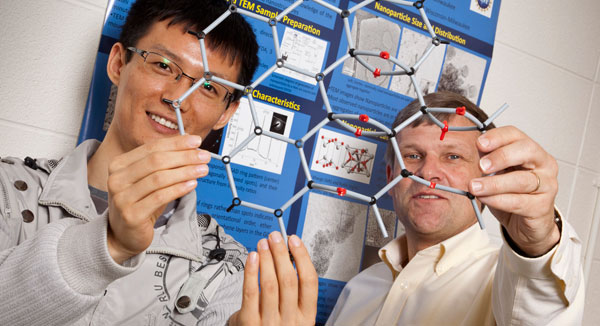
"GMO exhibits characteristics that will make it easier to scale up than graphene. And, like silicon in the current generation of electronics, GMO is semiconducting, necessary for controlling the electrical current in such a strong conductor as graphene. Now all three characteristics of electrical conductivity - conducting, insulating and semiconducting - are found in the carbon family, offering needed compatibility for use in future electronics."
Source: Read the full article...
University of Wisconsin-Milwaukee News: http://www5.uwm.edu/news/2012/04/13/uwm-discovery-advances-graphene-based-electronics/#.T-H4IHDzLFc
Image: Alan Magayne-Roshak
|
|
Counterfeit Chips on the Rise
|
From IEEE Spectrum, June 2012, by Celia Gorman: "As more firms report finding phony chips, the danger they pose becomes clearer. Making semiconductors is a big business-and, so it seems, is counterfeiting them. Just how big is becoming clearer than ever, thanks in part to the candor of the U.S. military, and it will become even clearer as new laws in the United States come into effect later this year. In 2011, over 1300 counterfeit incidents were reported from around the world to Electronic Resellers Association International (ERAI), a private company that tracks counterfeit electronics for the industry." "The fear is that these counterfeits-including used and relabeled 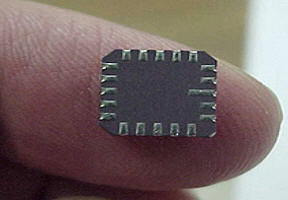 commercial gear or components falsely labeled as military grade-will fail more quickly than the parts they're standing in for. And because semiconductors are an integral part of everything from cellphones to nuclear reactor controls, the failure of a counterfeit chip in the wrong place could have deadly consequences."
Source: Read the full article...
|
|
First Direct Observation of Oriented Attachment in Nanocrystal Growth - pointing the way to synthesizing new biomimetic materials and improved bioremediation
|
From Lawrence Berkeley National Laboratory News Center, May 24, 2012, by Lynn Yarris.: "Through biomineralization, nature is able to produce such engineering marvels as mother of pearl, or nacre, the inner lining of abalone shells renowned for both its iridescent beauty and amazing toughness. Key to biomineralization is the phenomenon known as "oriented attachment," whereby adjacent nanoparticles connect with one another in a common crystallographic orientation. While the importance of oriented attachment to biomineral properties long has been recognized, the mechanism by which it occurs has remained a mystery. With a better understanding of oriented attachment it should be possible to synthesize new materials with remarkable structural properties. To that end, a team of researchers with the U.S. Department of Energy (DOE)'s Lawrence Berkeley National Laboratory (Berkeley Lab) have reported the first direct observation of what they have termed "jump-to-contact," the critical step in oriented attachment." "Ever since a study in 2000 led by co-author Jillian Banfield revealed the existence of nanoparticle oriented attachment, it has become widely recognized that the phenomenon is an important mechanism of crystal growth in many natural and biomimetic materials, as well as in the synthesis of nanowires. " Source: Read the full article...
|
|
Superionic Glass-Ceramic Electrolytes for Rechargeable Sodium Batteries
|
From Nature Communications, May 22, 2012, by Akitoshi Hayashi, et al. Nature Communications 3 | Article Number 856 | doi: 10.1038/ncomms1843: " Innovative rechargeable batteries that can effectively store renewable energy, such as solar and wind power, urgently need to be developed to reduce greenhouse gas emissions. All-solid-state batteries with inorganic solid electrolytes and electrodes are promising power sources for a wide range of applications because of their safety, long-cycle lives and versatile geometries. Rechargeable sodium batteries are more suitable than lithium-ion batteries, because they use abundant and ubiquitous sodium sources. Solid electrolytes are critical for realizing all-solid-state sodium batteries. Here we show that stabilization of a high-temperature phase by crystallization from the glassy state dramatically enhances the Na+ ion conductivity. An ambient temperature conductivity of over 10−4 S cm−1 was obtained in a glass-ceramic electrolyte, in which a cubic Na3PS4 crystal with superionic conductivity was first realized. All-solid-state sodium batteries, with a powder-compressed Na3PS4 electrolyte, functioned as a rechargeable battery at room temperature."
Source: Read the full article...
|
|
25,000 Microscopic Cloaks Trap Light to Create Illusion of Invisibility
|
From Towson University Newsroom, May 30, 2012: "Researchers at Towson University and the University of Maryland have successfully created a first-of-its-kind collection of 25,000 "invisibility cloaks," each measuring just 30 millimeters in diameter, which can slow down and harness light.
 The result is a "trapped rainbow," which can be used to effectively make an object appear invisible. The result is a "trapped rainbow," which can be used to effectively make an object appear invisible.
Inspired by researchers published in Physical Review B, who first wrote about positioning microscopic cloaks on a two-dimensional grid, Associate Professor Vera Smolyaninova and colleagues have turned an abstract concept into a physical product."
Source: Read the full article and link to the paper in the New Journal of Physics:
Towson University Newsroom: http://www.towson.edu/main/abouttu/newsroom/invisibilitycloaks053012.asp
Image: New Journal of Physics
|
|
Miracle Material Combines Properties of Plastic and Glass
|
From CNRS International Magazine (French National Center for Scientific Research), April 2012, p.14, by Mark Reynolds: "Researchers at the MMC (Paris) laboratory, were searching for a material that would be 'just right:' neither too brittle, like glass, too heavy, like metal, nor too easily melted, like plastic. They succeeded in developing a wonder material combining the versatility of plastic with the malleability of glass.
Called 'vitrimer,' this new organic compound can be shaped and  reshaped at will. The objective was to bridge the gap between 'thermoplastic' and 'thermoset' materials. reshaped at will. The objective was to bridge the gap between 'thermoplastic' and 'thermoset' materials.
Being lighter than metal, easier to work, and yet more resistant than many plastics, vitrimers can be sculpted without extreme heat. This means that when manufacturing large components - windmill blades, for instance - a flat sheet of vitrimer can be bent into desired shape without using enormous molds. 'But there are potentially much smaller applications like those found in automotive industry or portable electronics,' concludes Ludwik Leibler, from the MMC Laboratory."
Source: Read the full article... CNRS International Magazine: http://www.cnrs.fr/fr/pdf/cim/25/index.html#/14/ Image: D. Montarnal, et al. Science 2011. 334:965-8
|
|
New 'Metamaterial' Practical for Optical Advances
|
From Purdue University News Service, May 14, 2012, by Emil Venere: "Researchers have taken a step toward overcoming a key obstacle in commercializing "hyperbolic metamaterials," structures that could bring optical advances including ultrapowerful microscopes, computers and solar cells
The researchers have shown how to create the metamaterials without the traditional silver or gold previously required, said Alexandra Boltasseva, a Purdue University assistant professor of electrical and computer engineering. Using the metals is impractical for industry because of high cost and incompatibility with semiconductor manufacturing processes. The metals also do not transmit light efficiently, causing much of it to be lost. The Purdue researchers replaced the metals with an 'aluminum-doped zinc oxide,' or AZO." Source: Read the full article... Purdue University News Service: http://www.purdue.edu/newsroom/research/2012/story-print-deploy-layout_1_19804_19804.html
|
|
Solar Nanowire Array may Increase Percentage of Sun's Frequencies Available for Energy Conversion
|
From Sandia National Laboratories, June 18, 2012 : "Researchers creating electricity through photovoltaics want to convert as many of the sun's wavelengths as possible to achieve maximum efficiency. Otherwise, they're eating only a small part of a shot duck: wasting time and money by using only a tiny bit of the sun's incoming energies. For this reason, they see indium gallium nitride as a valuable future material for photovoltaic systems. Changing the concentration of indium allows researchers to tune the material's response so it collects solar energy from a variety of wavelengths. The more variations designed into the system, the more of the solar spectrum can be absorbed, leading to increased solar cell efficiencies. Silicon, today's photovoltaic industry standard, is limited in the wavelength range it can 'see' and absorb."

Source: Read the full article...
|
|
Sweating the Small Stuff - Nanoparticle Purity
|
From Chemical & Engineering News, May 28, 2012, by Lauren K. Wolf: " Concerns grow over nanoparticle characterization and purity. No standards have been established for the synthesis of nanomaterials," in contrast to the rigorous well-established requirements for synthesis of new organic molecules. "Today, researchers are using nanomaterials as catalysts as well as incorporating them into electronic devices and sensors. They're also developing the tiny materials to be injected into patients' bodies as cancer-fighting medicines and imaging agents for disease. Scientists working in this area are becoming more concerned about nanoparticle characterization, and they're debating what levels of purity are needed for particular applications. Some are establishing new methods to characterize and purity nanomaterials and others are discussing whether journals should set minimum characterization requirements for authors seeing to publish syntheses."
Read further about the challenges affecting nanomaterial purity such as lab temperature and physical properties.
Source: Read the full article...
|
|
European Extremely Large Telescope "Approved"
| From Optics.org, June 12, 2012: " A project to build what will be by far the world's largest optical and infrared telescope - complete with six laser guide stars and an adaptive mirror to yield astronomical images in unprecedented detail - has passed a key stage of approval. At a meeting in Garching, Germany, European Southern Observatory (ESO) council voted for provisional go-ahead to construct the proposed European Extremely Large Telescope (E-ELT) - a 39.3 meter diameter instrument to be sited at the summit of Cerro Armazones in northern Chile.
The cost of building the telescope, which will have more than twenty times the light-gathering power of the current generation of Very Large Telescopes (VLTs), has been estimated at just under €1.1 billion (US$ 1.4 billion). One key part of the project is the "CANARY" four-laser system to provide guide stars for the adaptive optics that compensates for the blurring effect of the Earth's atmosphere."
Source: Read the full article...
|
|
Do You Have an Interesting Article to Share?
|
Interested in sharing the latest news in vacuum coating technology? Forward us a link to an article you want to share with the rest of the SVC readership to publications@svc.org. Purchase advertising space in this newsletter by contacting SVC at 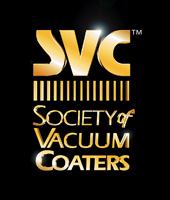 svcinfo@svc.org. svcinfo@svc.org.
Society of Vacuum Coaters
71 Pinon Hill Place NE
Albuquerque, New Mexico 87122
505-856-7188
|
|
|
|
|